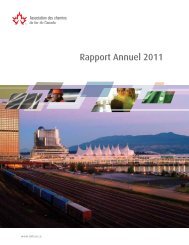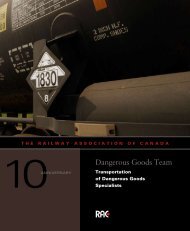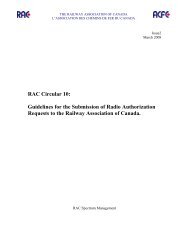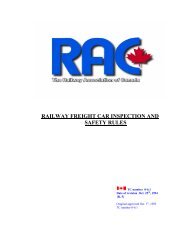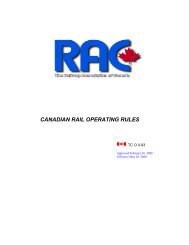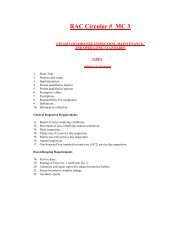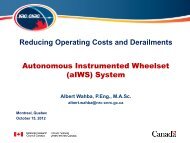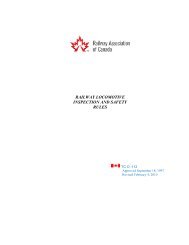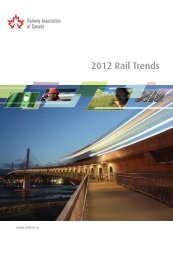Locomotive Emissions Monitoring Program - Railway Association of ...
Locomotive Emissions Monitoring Program - Railway Association of ...
Locomotive Emissions Monitoring Program - Railway Association of ...
Create successful ePaper yourself
Turn your PDF publications into a flip-book with our unique Google optimized e-Paper software.
4 Diesel Fuel Properties<br />
The RAC survey showed that in 2008 the<br />
weighted average sulphur content <strong>of</strong> the<br />
diesel fuel used by Canadian railways was<br />
147 ppm. This is down from the average <strong>of</strong><br />
500 ppm in 2008 and 1,275 ppm in 2006.<br />
As noted in Section 5, this resulted in a<br />
lower emission factor used to calculate<br />
the emitted amount <strong>of</strong> oxides <strong>of</strong> sulphur<br />
(SOx, but expressed as SO 2 ).<br />
Influencing railway diesel fuel properties<br />
has been the requirement, effective<br />
June 1, 2007, to comply with the<br />
Environment Canada regulation limiting<br />
sulphur content to 500 ppm (or 0.05 per<br />
cent). This precedes a further reduction<br />
that will come into effect June 1, 2012,<br />
limiting sulphur content to 15 ppm (or<br />
0.0015 per cent) – referred to as ultralow<br />
sulphur diesel (ULSD) fuel. The fact<br />
that the 2008 average sulphur content<br />
was lower than 500 ppm shows that ULSD<br />
is already being used extensively. VIA<br />
Rail Canada and the commuter railways<br />
have, since 2007, standardized on the<br />
use <strong>of</strong> ULSD fuel.<br />
Photo courtesy <strong>of</strong> VIA Rail<br />
13 LEM 2008





